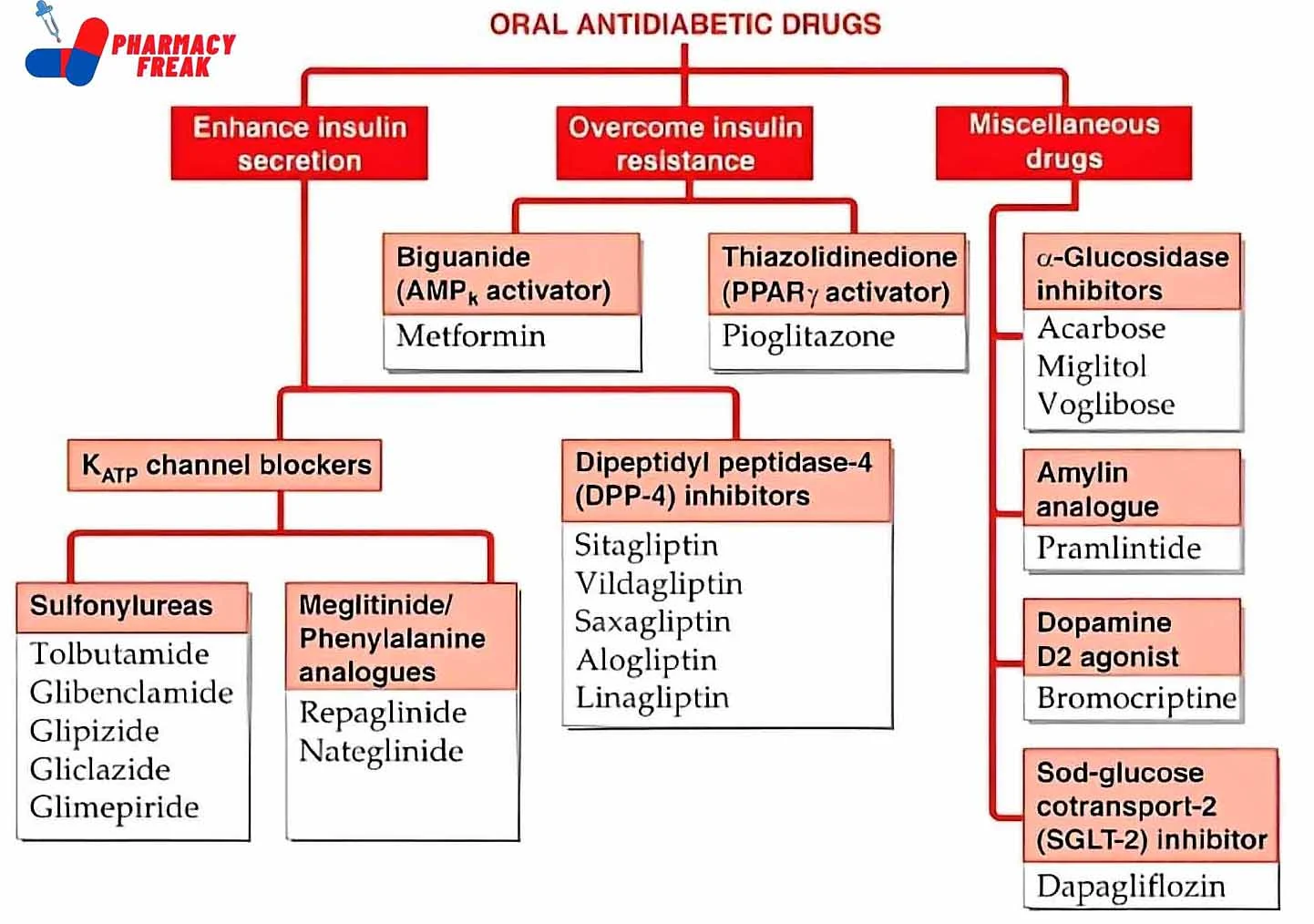Diabetes is a condition where the body has trouble processing blood sugar. It is important to manage blood sugar levels to avoid complications like heart disease and nerve damage. Oral antidiabetic drugs are medications that can help lower blood sugar levels for people with diabetes.
Types of Oral Antidiabetic Drugs
Sulfonyl ureas
Sulfonyl ureas are an oral antidiabetic drug that stimulates the pancreas to produce more insulin. It helps lower blood sugar levels. Some commonly prescribed sulfonylureas include Glipizide, Glyburide, and Gliclazide. Sulfonylureas can cause hypoglycemia (low blood sugar, and weight gain, and have a risk of interactions with other medications.
Biguanide
Biguanides are a type of oral antidiabetic drug that works by reducing the amount of glucose produced by the liver, and increasing insulin sensitivity in the body. Some commonly prescribed biguanides include Metformin and Metformin Extended Release. One advantage of biguanides is that they do not cause hypoglycemia like sulfonylureas. They can cause gastrointestinal side effects, such as nausea and diarrhea.
DPP-4 inhibitors
DPP-4 inhibitors are a type of oral antidiabetic drug that works by increasing insulin secretion and decreasing glucagon production in the body. This helps lower blood sugar levels. Some commonly prescribed DPP-4 inhibitors include Sitagliptin, Saxagliptin, and Linagliptin. The advantage of DPP-4 inhibitors is that they have a low risk of causing hypoglycemia and weight gain. In rare cases, they may cause some side effects such as headache, nasopharyngitis (cold-like symptoms), and pancreatitis. They can also be expensive compared to other oral antidiabetic drugs.
GLP-1 receptor agonists
These drugs mimic the effects of a naturally occurring hormone called glucagon-like peptide-1 (GLP-1). They work by increasing insulin secretion, decreasing glucagon production, and slowing down stomach emptying. This helps lower blood sugar levels. Some commonly prescribed GLP-1 receptor agonists include Liraglutide, Dulaglutide, and Exenatide. The advantage of GLP-1 receptor agonists is that they have a low risk of causing hypoglycemia and can promote weight loss. They can be expensive compared to other oral antidiabetic drugs and may cause gastrointestinal side effects such as nausea, vomiting, and diarrhea.
SGLT2 inhibitors
SGLT2 inhibitors are a type of oral antidiabetic drug that works by blocking a protein called sodium-glucose cotransporter 2 (SGLT2) in the kidneys. This protein is responsible for reabsorbing glucose back into the bloodstream, so blocking it helps the body excrete excess glucose through urine, thus lowering blood sugar levels. Some commonly prescribed SGLT2 inhibitors include Canagliflozin, Dapagliflozin, and Empagliflozin. The advantage of SGLT2 inhibitors is that they can promote weight loss and have a low risk of causing hypoglycemia. They may cause urinary tract infections, and genital infections, and increase the risk of dehydration and ketoacidosis in some people. They are also relatively new, so limited long-term safety data is available.
Classification

- Enhance insulin secretion
- KATP channel blockers
- Sulfonylureas– Tolbutamide, Glibenclamide, Glipizide, Gliclazide, Glimepiride
- Meglitinide/ Phenylalanine analogues– Repaglinide, Nateglinide
- Dipeptidyl peptidase-4 (DPP-4) inhibitors– Sitagliptin, Vildagliptin, Saxagliptin Linagliptin, Alogliptin
- KATP channel blockers
- Overcome insulin resistance
- Biguanide (AMPK activator)– Metformin
- Thiazolidinedione (PPAR activator)– Pioglitazone
- Miscellaneous drugs
- a-Glucosidase inhibitors– Acarbose, Miglitol, Voglibose
- Amylin analogue– Pramlintide
- Dopamine D2 agonist- Bromocriptine
- Sod-glucose cotransport-2 (SGLT-2) inhibitor– Dapagliflozin
Related Links
Reference
- CLASSIFICATION OF ORAL ANTIDIABETIC DRUGS- KD Tripathi
- National Library of Medicine- Oral Hypoglycemic Medications
